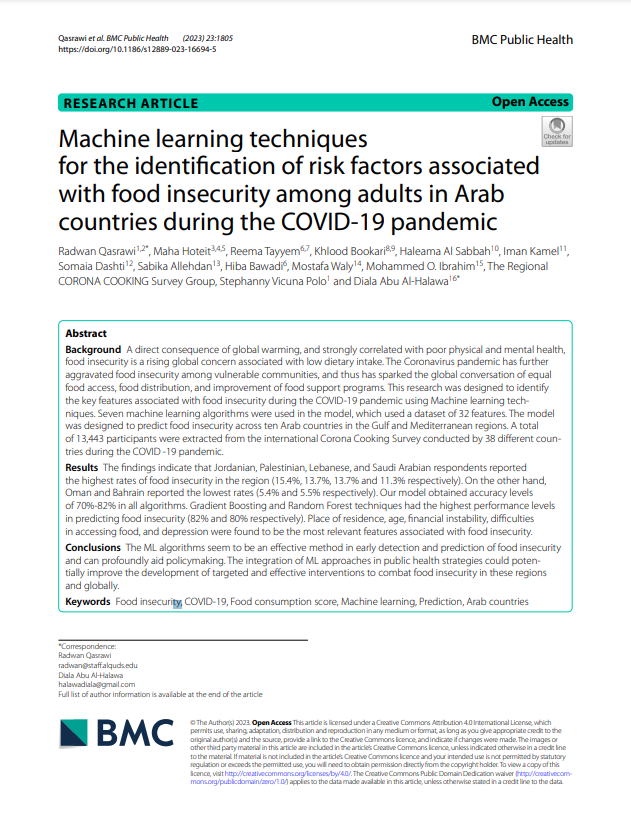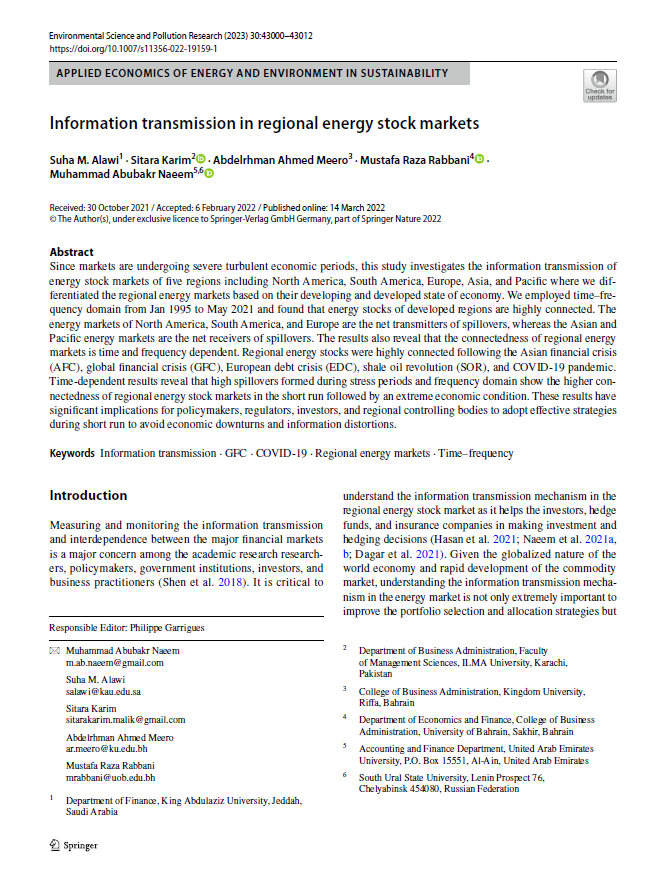Document
Identifier
https://digitalrepository.uob.edu.bh/id/8bcedbe5-2ae3-41c0-82d0-c2bd3d3c57bf
Machine learning techniques for the identifcation of risk factors associated with food insecurity among adults in Arab countries during the COVID-19 pandemic
Linked Agent
Hoteit, M, Author
Tayyem, R, Author
Bookari, K, Author
Al Sabbah, H, Author
Kamel, I, Author
Dashti, S, Author
Allehdan, S, Author
Bawadi, H, Author
Waly, M, Author
Ibrahim, M.O, Author
Polo, S.V, Author
Al-Halawa, D.A, Author
Country of Publication
Kingdom of Bahrain
Place Published
Sakhir, Bahrain
Publisher
University of Bahrain
Date Issued
2023
Language
English
Subject
English Abstract
Abstract:
Background A direct consequence of global warming, and strongly correlated with poor physical and mental health, food insecurity is a rising global concern associated with low dietary intake. The Coronavirus pandemic has further aggravated food insecurity among vulnerable communities, and thus has sparked the global conversation of equal food access, food distribution, and improvement of food support programs. This research was designed to identify the key features associated with food insecurity during the COVID-19 pandemic using Machine learning tech‑ niques. Seven machine learning algorithms were used in the model, which used a dataset of 32 features. The model was designed to predict food insecurity across ten Arab countries in the Gulf and Mediterranean regions. A total of 13,443 participants were extracted from the international Corona Cooking Survey conducted by 38 diferent coun‑ tries during the COVID -19 pandemic. Results The fndings indicate that Jordanian, Palestinian, Lebanese, and Saudi Arabian respondents reported the highest rates of food insecurity in the region (15.4%, 13.7%, 13.7% and 11.3% respectively). On the other hand, Oman and Bahrain reported the lowest rates (5.4% and 5.5% respectively). Our model obtained accuracy levels of 70%-82% in all algorithms. Gradient Boosting and Random Forest techniques had the highest performance levels in predicting food insecurity (82% and 80% respectively). Place of residence, age, fnancial instability, difculties in accessing food, and depression were found to be the most relevant features associated with food insecurity. Conclusions The ML algorithms seem to be an efective method in early detection and prediction of food insecurity and can profoundly aid policymaking. The integration of ML approaches in public health strategies could poten‑ tially improve the development of targeted and efective interventions to combat food insecurity in these regions and globally.
Title of Periodical
BMC Public Health
Member of
Category
Article




